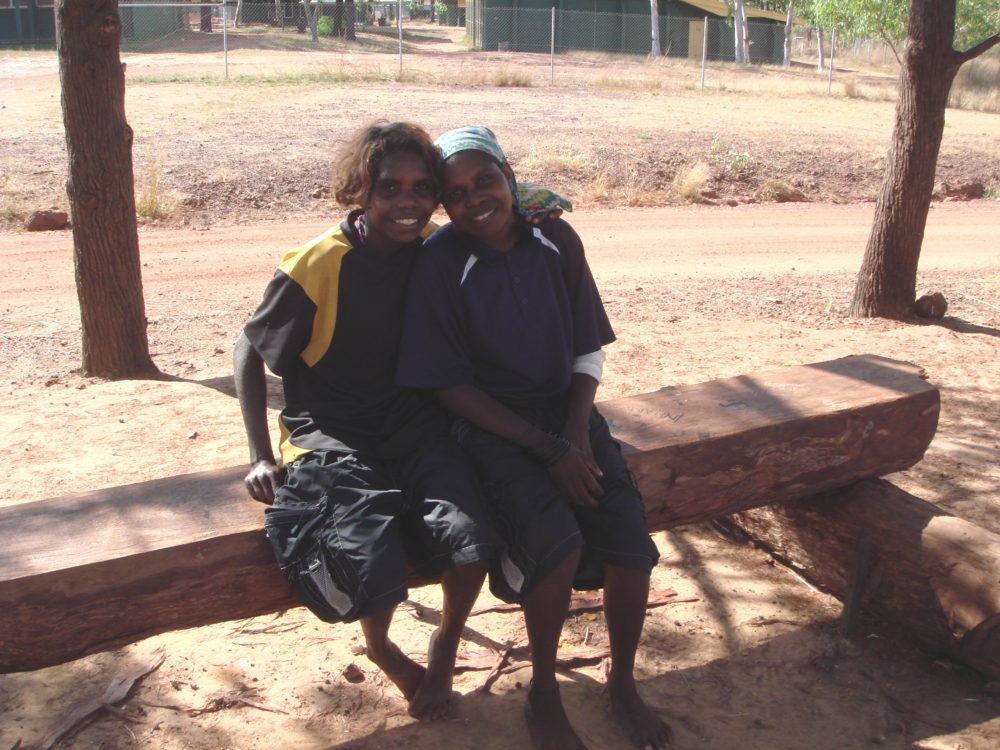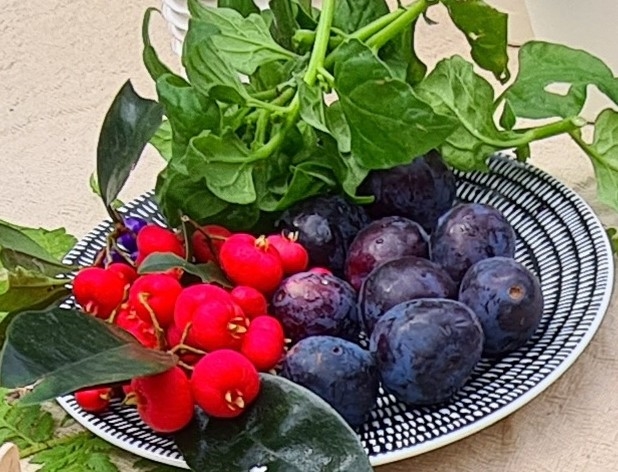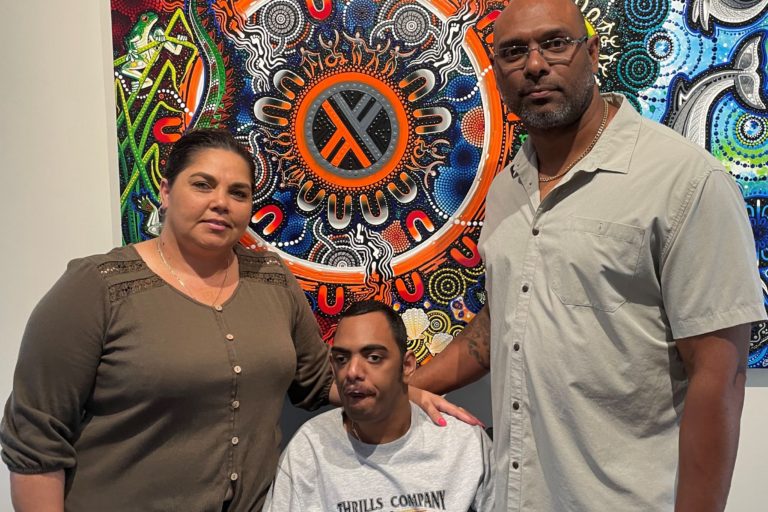By Neena Bhandari
Wadeye (Australia), 09.07.2009 (IPS): In the remote Aboriginal town of Wadeye, 420 km south-west of Northern Territory’s capital, Darwin, third world living conditions still prevail despite the Australian Government’s efforts to improve life for its oldest inhabitants.
Wadeye, formerly known as Port Keats, has the largest Aboriginal community with a population of 2,500, comprising over 20 tribal groups speaking seven languages. The family and clan diversity in this remote community, some say, has led to simmering tensions which erupt into violence every now and then.
It is hot and muggy and the only sound is that of stirring leaves in the light breeze. From the desolate airstrip, the message on the posters, however, is loud and clear: “Don’t bring gunja into our town” and `No alcohol, no pornography’.
Consumption of drugs has been a major problem in a town that was declared alcohol-free in 1988. “Our community has been dry for two decades, but the White staff has permits for alcohol. It is discriminatory”, says William Parmbuk, 44, Chairperson of the Thamarrurr Regional Council, who finds the second poster offensive and would like it pulled down.
Australian Aboriginal and Torres Strait islanders, who comprise only 2.5 per cent or 517,000 of the country’s 22 million population, have been one of the most marginalised populations in the developed world.

The just released Productivity Commission’s ‘Overcoming Indigenous Disadvantage’ report found Aborigines were far worse off than previously thought, with a lifespan 17 years shorter than the national average, 35 in every 1,000 children suffering abuse or neglect. Murder rates were seven times higher in the Aboriginal community, with hospitalisations from domestic violence 34 times higher and Aborigines 13 times more likely to be imprisoned.
Prime Minister Kevin Rudd had last year delivered a historic “apology” to the Aborigines for past injustices and pledged that his government would aim to close the gap between Indigenous and non-Indigenous Australians in key areas like health and education, infant mortality and life expectancy.
Australia’s Minister for Families, Housing, Community Services and Indigenous Affairs, Jenny Macklin, says “this report really does demonstrate the depth and extent of the challenge in front of us”.
Decades of racist subjugation by European invaders; the separation of tens of thousands of children, forcibly removed from their families between 1900 and 1970 under the Government Assimilation Policies to ‘breed out’ Aborigine blood and supposedly give them a better life; dispossession of land rights; imprisonment and lack of education, health care, jobs and housing are some of the factors that have contributed to the violence occurring in these communities.
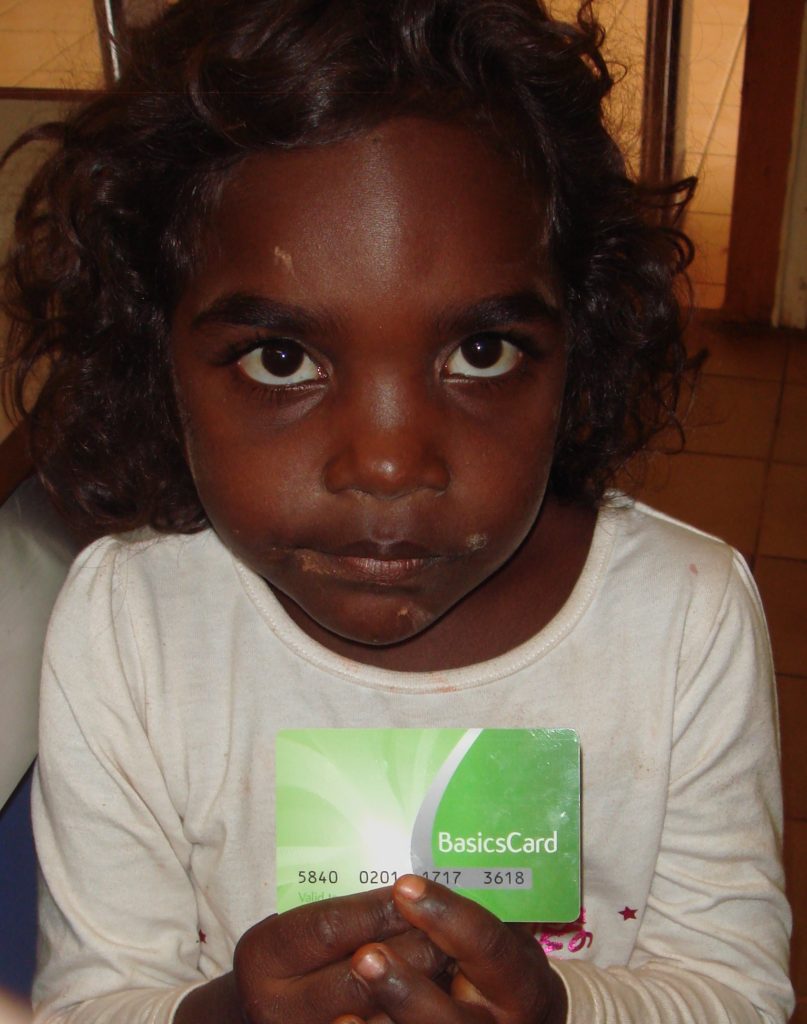
Wadeye became the focus of former Prime Minister John Howard-led Liberal Government’s controversial 2007 Northern Territory Emergency Response (NTER), implemented soon after a government-commissioned inquiry concluded that child sexual abuse in remote Aboriginal communities had become an issue of “urgent national significance.”
Commonly referred to as the government `intervention’, million of dollars, AUD 687 million in the 2007-08 financial year alone, have been poured into Aboriginal communities in the Territory with stringent restrictions on alcohol and pornography and regulations on income. A part of the residents’ welfare money is now quarantined and can only be spent on family essentials and food. Welfare payments can be suspended if parents don’t send their kids to school.
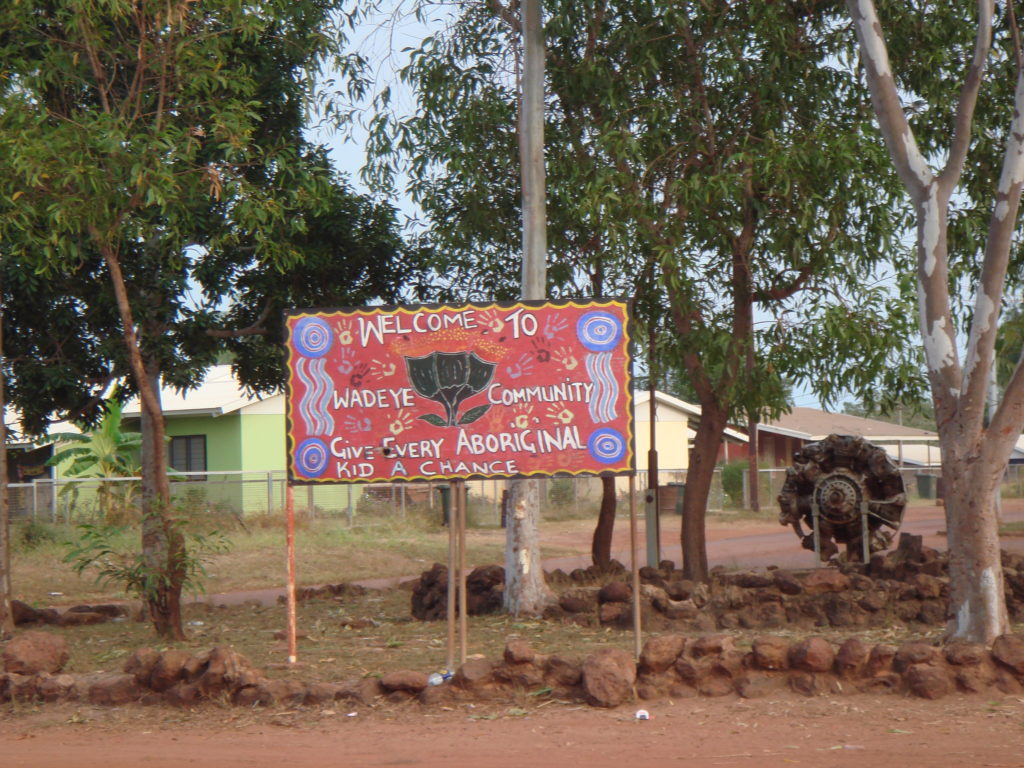
Only 50 per cent of the 650-odd children are enrolled in school. A cheerful poster greets, “Welcome to Wadeye. Give every Aboriginal kid a chance,” but this correspondent’s request to visit the school or interview the principal are turned down. While Murrinh Patha is the most common language and most people can speak three languages, English is not spoken widely in what is largely a monolingual country.
“We want to educate our children to be future leaders in our community. There is too much disparity in education between White Australians and the Indigenous people. We now have one high school, but we need a college so our children can pursue higher studies in medicine and engineering and get good jobs”, says Parmbuk, who is one of the fortunate ones to have studied at St John’s College in Darwin.
A few facts encapsulate this town, nestling on the western edge of the Daly River Reserve, between scrub and the mangroves of Joseph Bonaparte Gulf, Wadeye is isolated during the wet season apart from access through small chartered flights. Median age at death is 46; less than one-fourth of the adults are employed and nearly 80 per cent Aboriginal income is attributable to welfare sources.
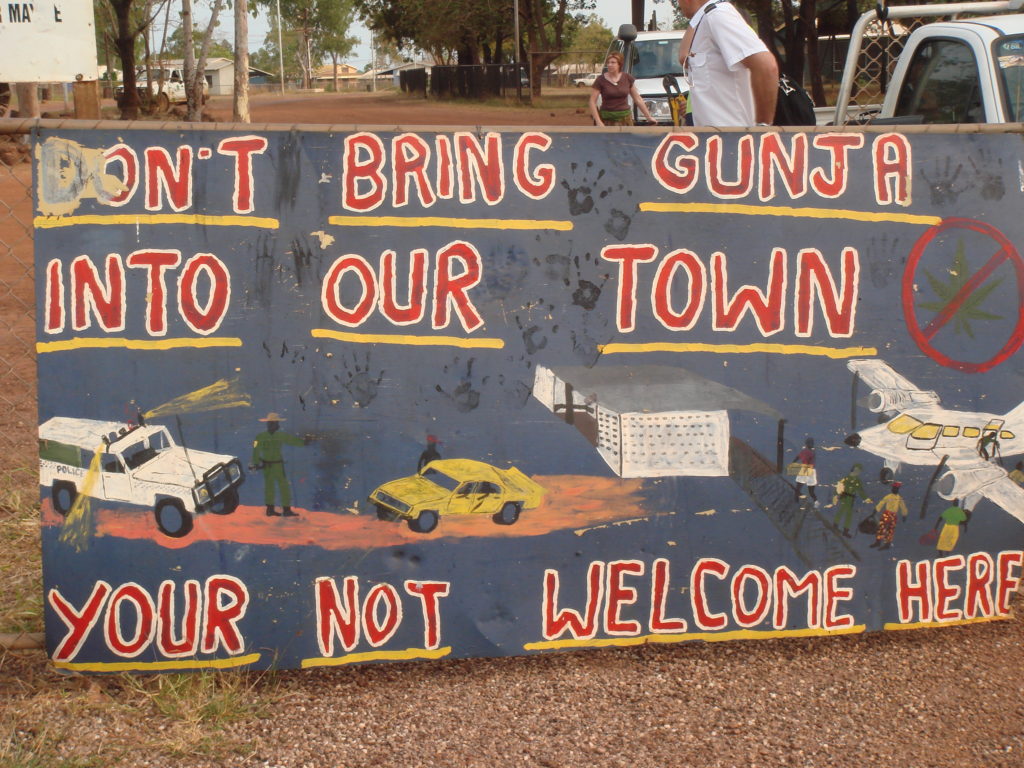
A dusty road leads into the city centre. Graffiti-stained houses emerge on either side with groups of people smoking, some playing cards or just sitting around. There are many dogs and children. Inside a home, squalor abounds as over a dozen residents are crammed into a two bedroom house.
On an average 16 people reside in a house. Over-crowding in houses has been attributed as one of the main reasons for violence, spread of contagious diseases and child abuse. “We need more 5 to 6 bedroom houses with breeze ways and open areas. The design should be culturally viable”, says Parmbuk, whose grandfather was brought up in the mission here, set up in 1935.
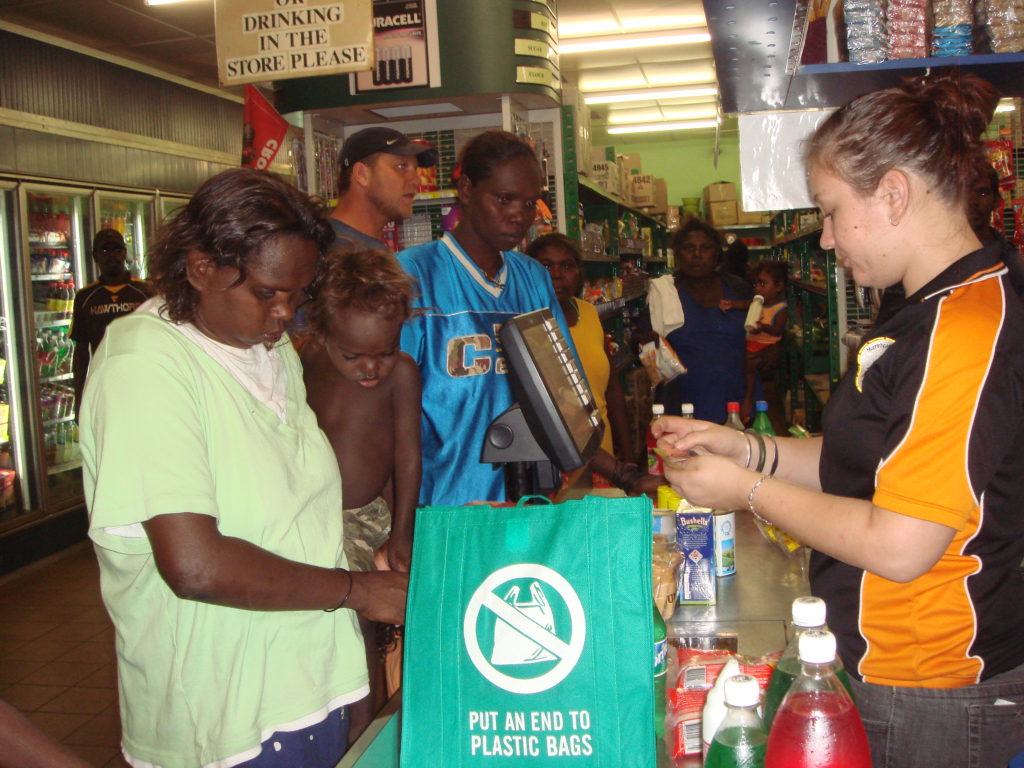
The only supermarket, Murrinh Patha Nimmipa Store, where people can use their Basics Card is overflowing with people. Three out of the 15 staff are Indigenous. The goods on the shelves are dearer than in Sydney.
Store Manager Mark Hoy says, “As a result of the Government’s income management, there has been an increase in fruit sales, T-shirts and White goods. It is also bringing a lot more young boys to the shop, who would earlier spend the cash on alcohol, drugs, cigarettes and playing cards. Some women are happier now. They had to spend all the money early in the month as men would forcibly take their welfare money”.
However, not everyone is happy with the quarantining of welfare payments. Some feel it has created hardship and inconvenience as they are compelled to pay more for goods and travel long distances to use a Basics card.

Outside the Health Centre, which has 20 per cent Indigenous staff, there is a poster admonishing `Pupuy (go away) scabies’. The reality dawns of the endemic social and health problems facing this community. There is high incidence of chronic diseases and kidney ailments, but patients have to be flown in to Darwin for specialist treatment. “We have been demanding more dialysis machines for the past six years”, says Parmbuk as the health officer is “unavailable” to comment.
Again, the police are “unavailable” to comment, but Peter Cumaiyi of the Night Patrol shares his experience of keeping the community safe. “Yes, there was lot of violence, now it is easing. My job is to keep kids off the streets. We try to stop problems before they happen by talking to young boys and ensuring that they go to school or to their family instead of roaming the streets for trouble”, says Cumaiyi, who along with his team of eight patrol the streets from 9pm to 3.30am.
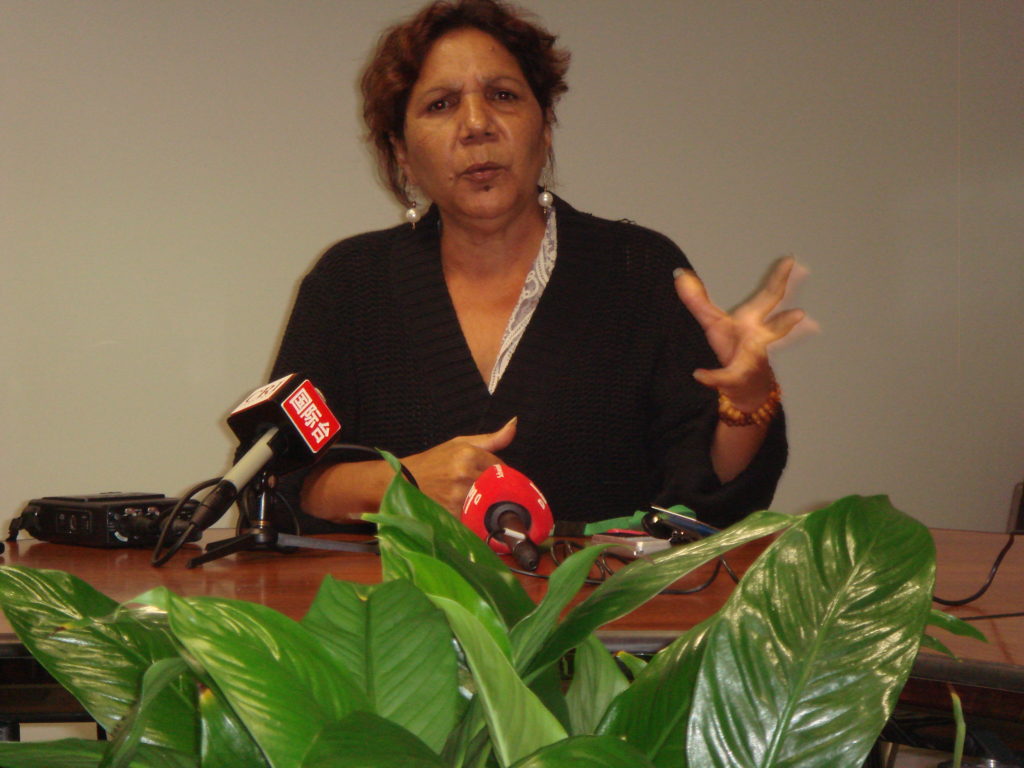
Emphasising that the Intervention is working, Northern Territory’s Minister for Indigenous Policy, Alison Anderson, who is Aboriginal, says her people have got used to surviving on welfare and up to 30 people living under one roof. “A job or a new house alone won’t change their mindset. Tough love has always worked, you know? It’s worked in my life and it’ll work in anyone’s life,” she says.
“It works when communities take the initiative. Wadeye is rich with traditional law and culture. We want these people to aspire for hope”, says Anderson.
Helping communities move from welfare to work for income will go a long way in instilling hope.
© Copyright Neena Bhandari. All rights reserved. Republication, copying or using information from neenabhandari.com content is expressly prohibited without the permission of the writer and the media outlet syndicating or publishing the article.

